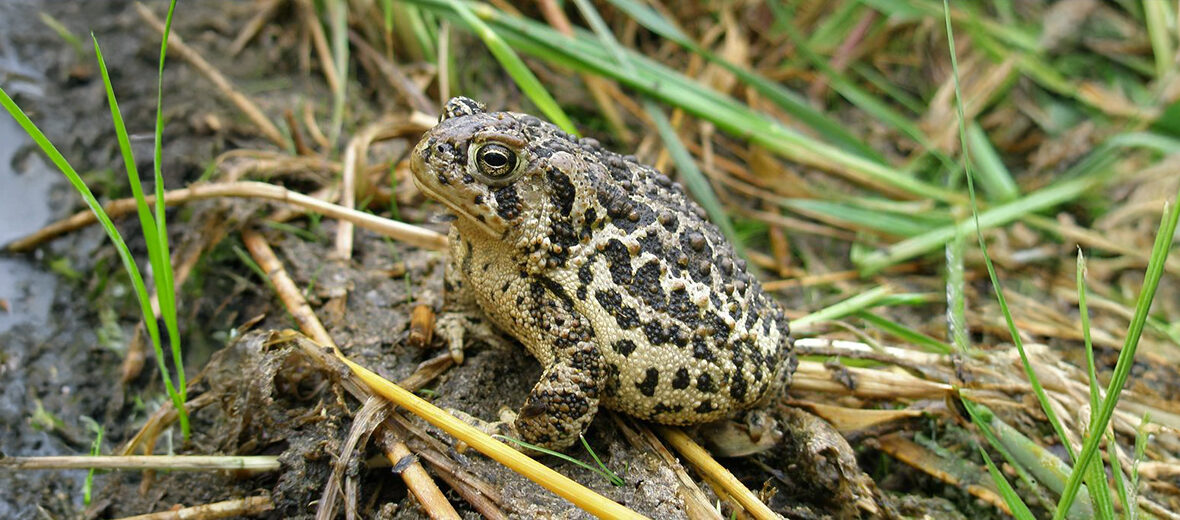
The Wyoming toad, aka Baxter’s toad, is a toad species from the family Bufonidae. These critters are extremely rare and only exist in captivity within Mortenson Lake National Wildlife Refuge in Wyoming in the United States. They were listed as an endangered species in 1984, and just 7 years later listed as extinct in the wild since 1991. The effort to save the Wyoming toad has been a cooperative effort among state & federal agencies as well as private landowners for years. They have faced the threats of habitat loss and destruction at the hands of dams and water management practices; pollution, both land and water; invasive species, that can bring about predation and disease; and climate change, that can cause severe droughts. The IUCN lists these toads as Extinct in the Wild. Sadly, the only remaining species exist in captivity.
First the Stats…
Scientific name: Anaxyrus baxteri
Weight: Up to 3 ounces
Length: Up to 2.2 inches
Lifespan: Up to 30 years
Now on to the Facts!
1.) These toads were common from the 1950s through the early 1970s, however their distribution was limited to the Laramie Basin in Albany County.
2.) To prevent their extinction, a captive-breeding program began in 1989 at the Thorne Williams Unit that reared enough offspring in its first few years to supply 7 zoos, and in 1998 the Saratoga National Fish Hatchery received a captive-breeding stock as well.
3.) Approximately 46,000 offspring were reared at the Thorne Williams Unit from 1995 until 2006, when the remaining captive bred stock was moved to the Red Buttes Environmental Biology Laboratory south of Laramie, and later released back into the wild.
4.) These toads had originally been classified as Bufo hemiophrys baxteri, a subspecies of the Canadian toad, by Kenneth Raymond Porter in 1968. Then later renamed to Anaxyrus baxteri.
5.) Wyoming toads are very susceptible to chytrid fungus. Chytrid has caused the decline of about 500 species of amphibians and a total extinction of an estimated 90 more!
But wait, there’s more on the Wyoming toad!
6.) They are nocturnal (active at night).
7.) These toads have poor eyesight and as a result they are sight hunters that rely on the movement of their prey while hunting. If their prey doesn’t move, they don’t see them.
Did you know…?
Their specific name, baxteri, is in honor of the American zoologist Dr. George T. Baxter who discovered the relict population in 1946.
8.) Wyoming toads prefer floodplains and the short grassy edges of ponds, creeks and lakes. They also utilize abandoned pocket gopher and ground squirrel burrows as hibernacula (a place where an animal seeks refuge).
9.) These toads awaken from hibernation in early May to migrate to the north shore for mating. They later return to the south shore by late September or as late as October to enter back into hibernation.
10.) Their mating call is a low frequency along with a slow pulse rate, but is longer than that of many other types of toads.
But wait, there’s still more on the Wyoming toad!
11.) It is believed, but not confirmed, that there are approximately 100 Wyoming toads still living in the wild, and as a result, a recovery group was formed by the U.S. Fish and Wildlife Service’s Saratoga National Fish Hatchery in 1998. The goal of this group was to carry out a captive breeding program and reintroduce tadpoles back into the wild.
12.) That being said, the captive breeding program has seen low reproductive output due to low ovulation and fertilization rates. Female toads were given a dose of luteinizing hormone releasing hormone (LHRHa), which also induces spawning in fish, while male toads were dosed with human chorionic gonadotropin (hCG).
Did you know…?
In 2023 the Wyoming toad was displayed on a United States Postal Service forever stamp as part of the Endangered Species set, based on a photograph from Joel Sartore’s Photo Ark.
13.) This extended “priming” of the Wyoming toad yielded higher fecundity (an organism’s potential to reproduce) and an increased number of eggs per toad was observed, as well as a greater rate of survival from fertilization to the swim-up stage. Studies have also found that higher water temperatures reduced the time to metamorphosis.
14.) Recent surveys conducted at Crescent Lake, Wyoming in 2011 suggested that some natural breeding is occurring in the wild.
15.) Females lay up to 6,000+ eggs in the typical gelatinous string formation in water. The eggs hatch in up to 20 days, depending on the ambient temperature.
Now a Short Wyoming Toad Video!
Be sure to share & comment below! Also, check out the Critter Science YouTube channel. Videos added regularly!

Want to suggest a critter for me to write about? Let me know here.
Some source material acquired from: Wikipedia & IUCN
Photo credit: Sara Armstrong



